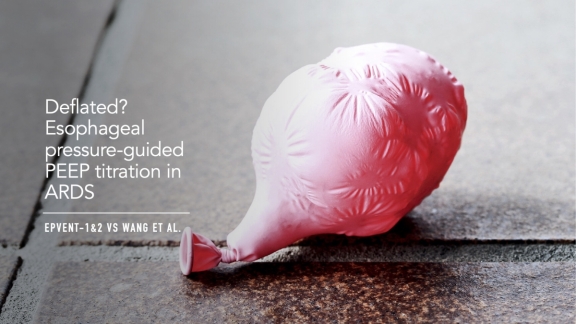Deflated? Esophageal pressure monitoring in ARDS

Lung protective ventilation limiting tidal volume and plateau pressure improves survival in ARDS. The application of positive end-expiratory pressure (PEEP) further stabilizes the lung by preventing alveolar collapse during expiration, thereby reducing cyclic atelectasis. However, the optimal approach to PEEP titration to minimize ventilator-induced lung injury (VILI) has not been delineated. The EPVent-1 trial demonstrated that esophageal pressure-guided PEEP titration was feasible and safe with a trend toward increased survival and improved oxygenation in mild to moderate ARDS. However, interest in esophageal manometry in ARDS was deflated by the more recent EPVent-2 trial demonstrating no improvement in a composite outcome incorporating mortality and ventilator-free days in patients with moderate to severe ARDS. A new randomized control trial published last week by Wang et al. examined the role of esophageal manometry-guided PEEP titration in a novel subset of severe ARDS patients treated with VV ECMO.


